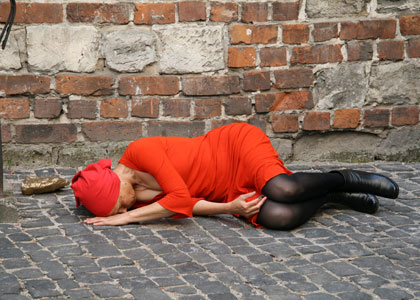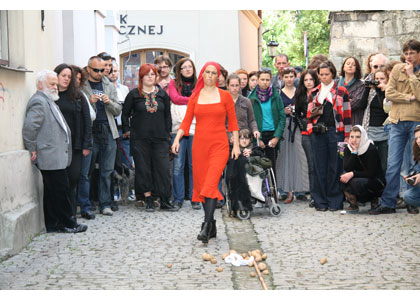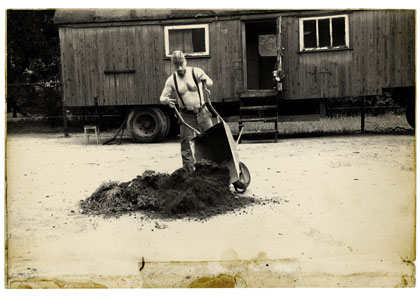Operations on Places
Curator: Waldemar Tatarczuk
08/11/2018 -
05/01/2019

A city is a construct, a never-ending story, a fixed benchmark, a pit of memory, a place where meaning is created, and a constant source of inspiration. The city is the subject of the exhibition “Operations on Places.” The featured works refer to a specific place—the public sphere of the city of Lublin—but the exhibition’s overall concept is not restricted to this city. “Operations on Places” explores the city as a concept, as represented by the case study of Lublin—its history, identity, and physical map.
The point of departure for the show is Mirosław Bałka’s video piece, MapL, depicting the Lublin city map installed in the former Nazi concentration camp Majdanek. This work sets the tone for all of the other works in the exhibition—mostly video performances devoted to specific sites, which extract feelings and sensations from the city map or project new emotions thereon. All the works were created in reference to particular locations with an audience in mind—whether a lone pedestrian or an imaginary collective city dweller; at the same time, however, they address the cityscapes per se, regardless of prospective viewers.
Some of the works represent an approach that, paraphrasing Milan Kundera, may be called “the unbearable lightness of city.” Philosophical-existential works and history-minded, memory-related works are juxtaposed with scenes of quotidian reality and bustling street life, as well as with attempts at communication in search of a kind word.
A machine for living and a system of communication, the city reveals itself as a highly complex, unpredictable phenomenon. Exploring, discovering, and confronting it, the artists engage in a temporal and spatial dialogue with the urban sphere. Whether the city streets are an apt place for art remains an open question, but what is certain is that art can definitely be found in them.
All the works courtesy of the artists and Galeria Labirynt, Lublin









